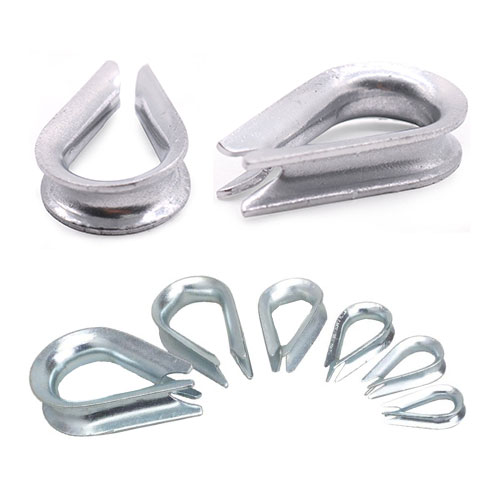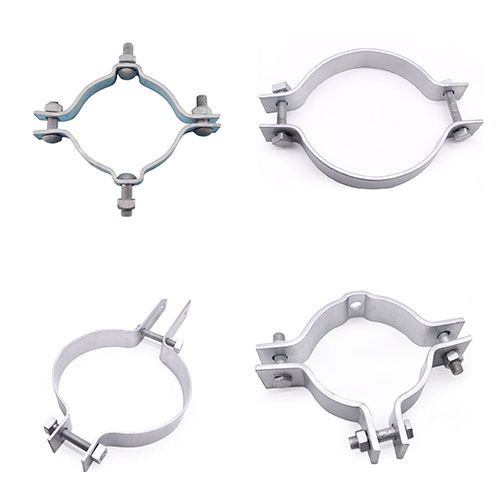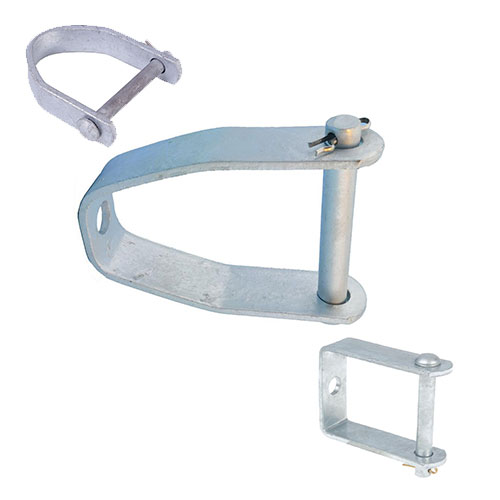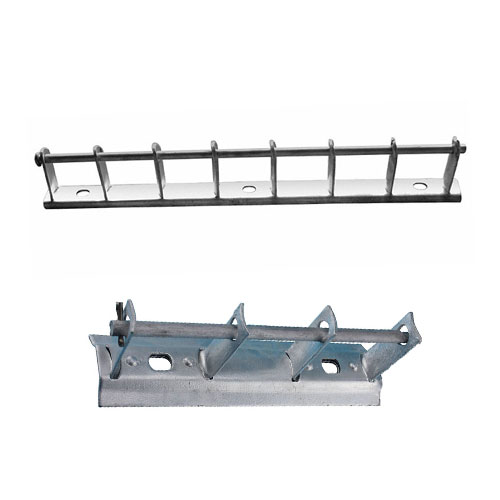Pole line accessories plays a protective role, in ensuring that the mains line and other vital cables are supported onto their respective positions. They also ensure that there is no overflow of the electric current from the mains lines.
It plays a critical role in guaranteeing safety for those who are nearby the poles. If they can prevent the mains cable from falling, it means that the lives of the people and property will be free from destruction.

A conduit standoff bracket is a transmission line hardware that helps conduit lines to stay in a fixed position. When it is used on the power pole, it is also called a power pole standoff bracket. The conduit standoff bracket is used for the conduit line that runs along an electric wire. It helps to hold the conduit line away from any other electric wires or it may help to keep the conduit line well above any other lines coming through it.
Conduit standoff brackets are made up of metal hence are strong enough to provide the required support. The material also gives them the required strength to endure all the different vagaries of nature that come with the outdoor setup.
The conduit line is normally attached to a conduit standoff bracket using an angle clamp, which helps hold it in place and secures conduit suspension. Conduit lines are used to carry electricity and must be strong enough to hold them.

Guy clamp is a type of suspension clamp for overhead power line and communication line, it can be used in loop type guy dead-ends. Guy clamp is also called guy wire clamp, parallel groove clamp or straight cable suspension clamp.
According to the number of clamping bolts used on the clamp, there are 1 bolt guy clamps, 2 bolt guy clamps and 3 bolt guy clamps. Guy clamps are designed and manufactured for optimum performance levels.
Guy clamps come in different sizes. The size is determined by the length, width, and diameter of the groove. This means that some guy clamps are longer or wider than others. At the same time, the groove of some guy clamps can support wider strands than others.

Guy hooks are used as connecting accessories to the poles. They connect the guy wires to the overhead transmission poles. They are also used for connecting guy wires to the guy strain insulators.
Given the critical roles that they play, we cannot deny the fact that guy hooks must be strong enough to offer a stable connection. This explains why the tensile strength of a guy hook should not be less than 1000Ibs.
The hot dip galvanized guy hooks feature ergonomic designs for easy clamping and connection. The ear-like design of the guy hook creates a stable connection with a guy loop or any other clamping accessory that you would like to connect the cable to. The grooves are smooth and polished to protect the cable strands from different types of physical degradation.

Guy thimble, also known as the cable thimble or stay wire thimble, is utilized for working as an interface on pole band to connect to the guy grip. The guy thimble is extensively utilized for the electric power line or a dead end line.
The structure of a guy thimble is quite comprehensive and simple. The guy thimble is bent with the help of an internal contour so that it can fit in multiple strand sizes.
The raw material used in a guy thimble is steel sheet having altering thickness and the punching machine cuts the steel into two ends at specific angles. The thimble has no sharp or protruding ends and the sheet is bent to a crescent shaped body. It is gone through galvanization according to the standards set by ISO 1461. The finished surface is free from burrs and is smooth.

A pole band also known as the pole fastener or a fastening clamp, is an accessory that is used for attaching secondary racks to the poles. The secondary racks are then used for supporting other pole line fittings and even the cables.
When it comes to the pole band designs, they are designed to suit perfectly around the poles. A single pole band comprises of two pieces of metal which are enjoined together by bolts to form a circular-like shape. The bolts ensure that the pole band (which is made up of galvanized steel material) is attached to the pole tightly.
The simplicity of these pole bands makes it easy to install them at their appropriate positions on the pole. It will also allow you to make the necessary adjustments when that time comes.

When you want to install an accessory onto the pole top or you want to fix an issue on the top, you will have to climb on the pole. While this is a difficult task to achieve, you can still do so with the help of a pole step. This is a screw-like object that you will drill into the pole and use as a stepping stone to the top of the pole.
The pole step is threaded to ease the installation into the pole. You only need to apply minimum pressure when driving it to the specific points of the pole. They are made of strong materials such as ASTM aluminum to confidently support the weight of the climber.
Features

The secondary clevis also known as the dead end clevis, comes with strict quality control and is punched with clevis pin and flat steel that strings the pool insulator. The secondary clevis, , is a D shaped iron D bracket. The electrical clevis has the main purpose for low voltage dead end or an overhead line.
Most often, the dead end clevis is used for connecting the spool insulator on the pole. This way, the spool insulator becomes able to support and insulate the conductors.
Moreover, the clevis pin is designed in such a way to bear the shearing forces and the belts are made for handling tension forces. The high tensile strength with a hot-dip galvanized finish ensures the maximum quality of the secondary clevis.

Secondary rack is a type of insulator cable support with a steel U channel at the base. The base is adjoined with the utility pole through nuts and bolts. The secondary rack has a galvanized finish, and it follows the ASTM-123 standard. the secondary rack is designed in such a manner that it can support three to four conductors.The manufacturing steps involve welding, drilling, riveting, and hot dip galvanizing.

Found on the light poles or street light, a street light arm is an extension of the structure that extends towards the LED end. Broadly speaking, a street light arm is used to amplify the magnitude of the light projecting from the pole for a better view.
A street light arm is strategically important for enhancing lighting in residential areas, pedestrian crossings, and urban settings. The right features, design, assemblage, and materials are essential as they decide the durability and effectiveness of the product.

Strand Vise is also called automatic guy wire deadend, it is a cone-shaped accessory that is usually positioned at the bottom of the transmission poles. Here it connects with the down guy wire. Strand vise is also used on the overhead lines where it is connected to the dead-end applications. Its primary function is to terminate the guy wire and the overhead cable.
A strand vise is designed to attach onto the cable using a finger-trap principle. Here, a spring projects its jaws onto the cable hence setting the tool. The jaws are released about to prevent them from sliding upwards.
The solid construction of the strand vise makes it reliable for a wide range of applications and also for different environments. It features galvanized steel which is not only strong but also protected from chemical destruction.
Copyright © 2025 Pinnacle Engineering & Exporters. All Rights Reserved